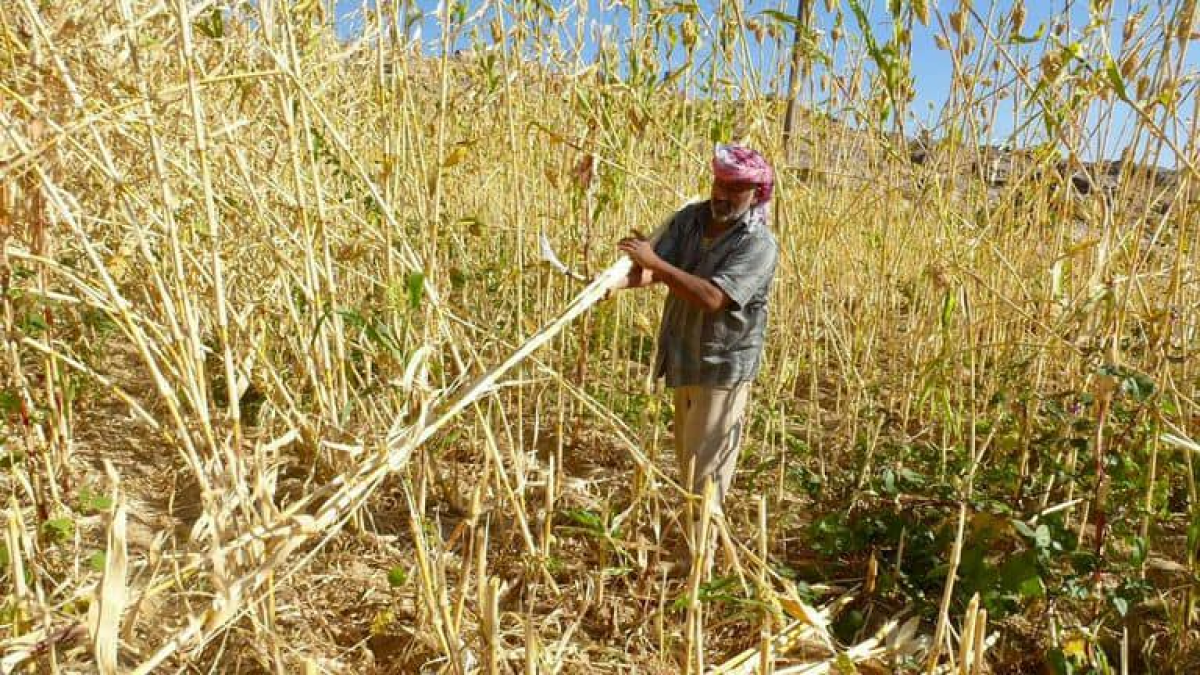Harvest season in Yemen.. Decline in production exacerbates farmers’ crises


A significant decline in the quantities of grain and corn crops in Yemen, which the Yemeni farmer continued to work on throughout the year.
Crop production was not satisfactory for the majority of farmers, in light of the shortage of fine grains during the season, due to the fluctuations of the rainy seasons and their interruption for long periods.
The decline in agricultural production is destroying livelihoods and livestock pastures, affecting the productivity of the agricultural sector, on which about 70% of Yemen’s population depends.
Harvest season
The harvest season in the Yemeni countryside represents a mobilization for farmers, as it begins in mid-October, after the crops are ready for harvest. Harvest days are among the most important days in which farmers reap what the land has yielded throughout the agricultural season.
p>The current time is considered the last growing season, and it lasts for a month or more, during which crops are collected, including corn, which is the farmer’s food stock.
Yemeni farmer Abdullah Sarhan said during his interview with Al-Ain News that there is a significant decline in the crop quantities of maize and red corn that he planted during this year’s season.
The Yemeni farmer Sarhan adds, “At the beginning of the farming season, after we plowed the land and put seeds in it, the rain stopped for a long period, which affected the amounts of crop production.”
He pointed out that despite the heavy rainfall over the past months, it “came after the crops were affected by drought.”
He explained that the torrents that flowed as a result of these rains caused the soil and what remained of the agricultural plants to be washed away in the valleys and agricultural terraces in many areas.
Rainy season fluctuations
This summer represented a major setback for farmers who mainly depend on rainwater in all regions of the country. It witnessed a significant decrease in rainfall and an increase in temperatures.
A number of Yemeni regions witnessed droughts and scarcity of rainfall, on which a large percentage of farmers depend, in addition to weak groundwater sources, on which farmers depend to nourish their non-seasonal agriculture.
This comes as a result of Yemen falling within an arid and semi-arid climate, which is the most prominent reason that leads to the scarcity of water sources and a significant decrease in the amounts of rainfall.
In general, grain cultivation dominates the majority of the agricultural area in Yemen, about 57%, while the area of legumes is 3%, and the rest of the area 40% is used for growing fruits and vegetables, cash crops, and fodder.
Official data estimates that the total amount of agricultural land in Yemen being cultivated does not exceed one million and 600 thousand hectares, which represents only about 3% of the total agricultural area throughout the country.